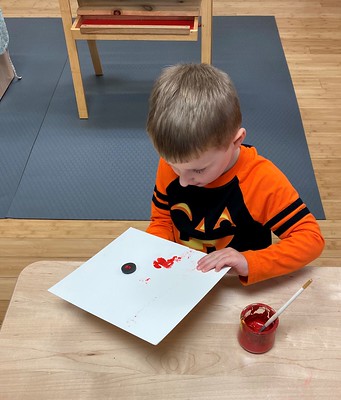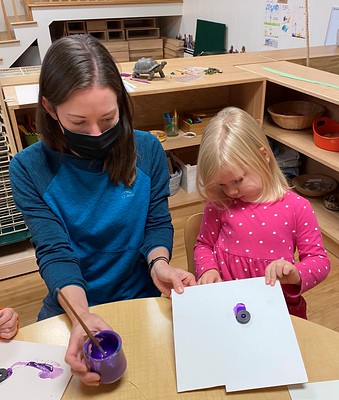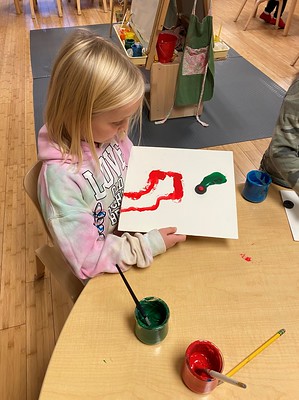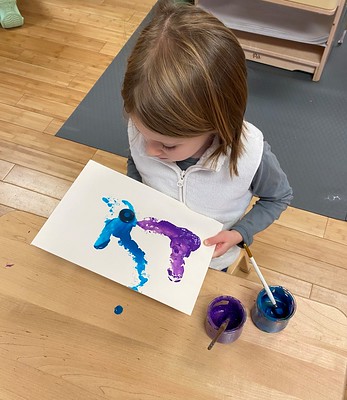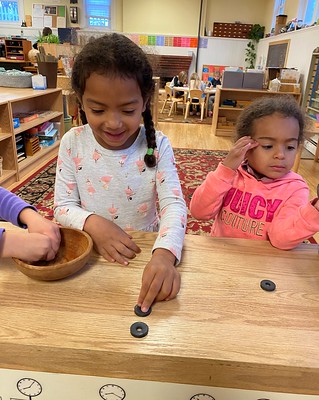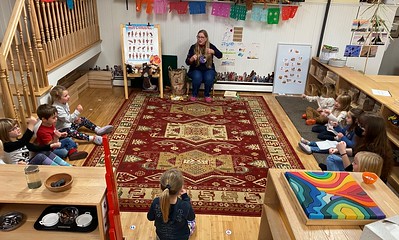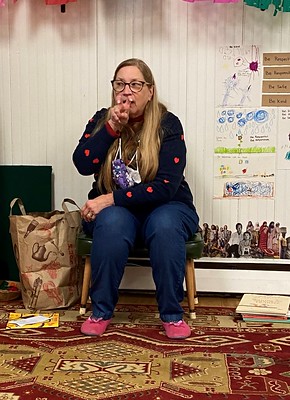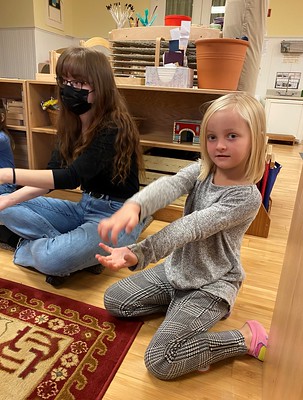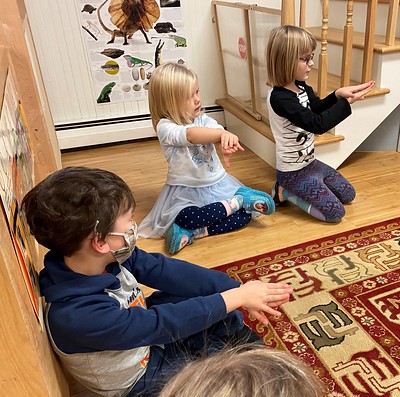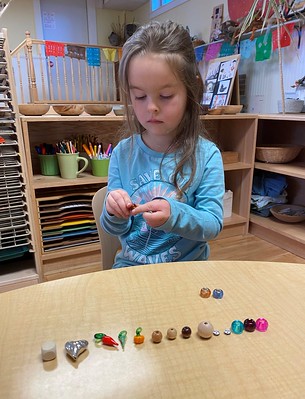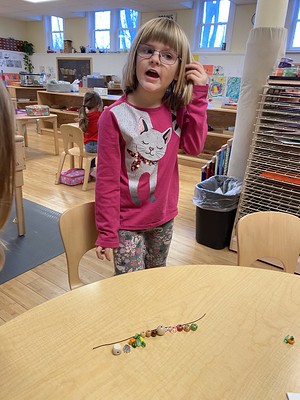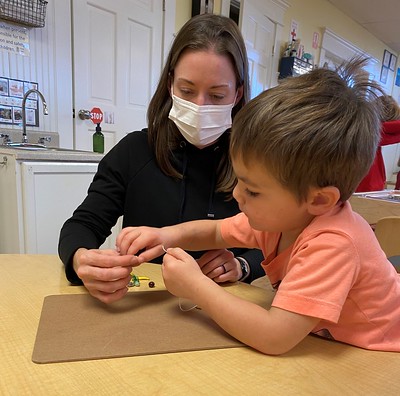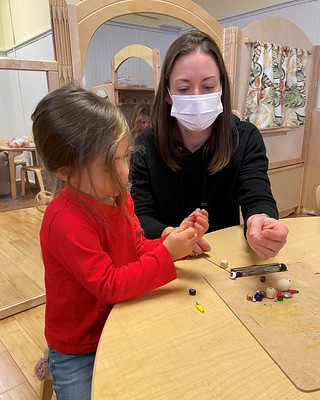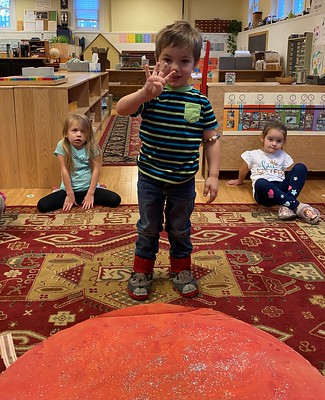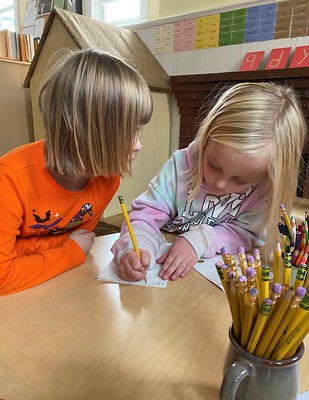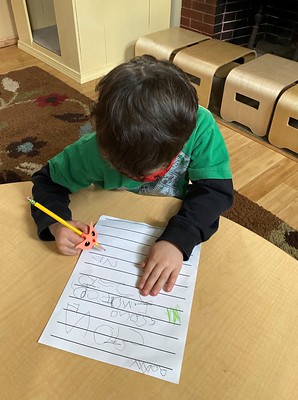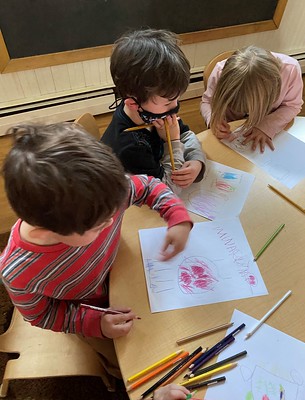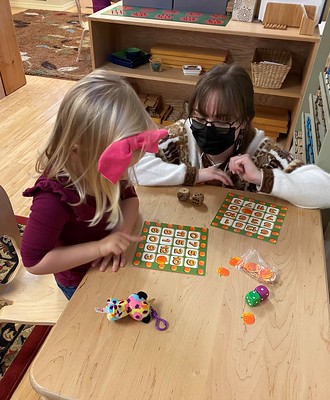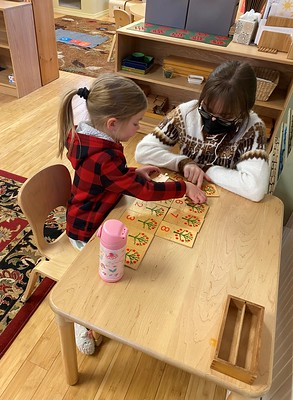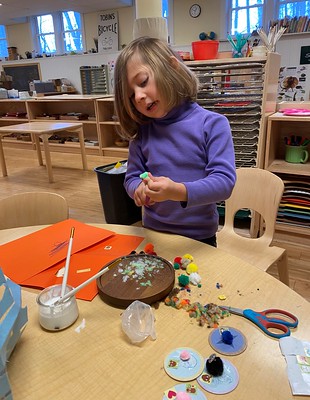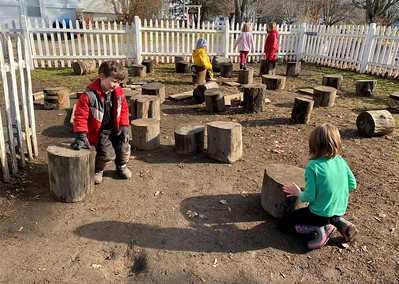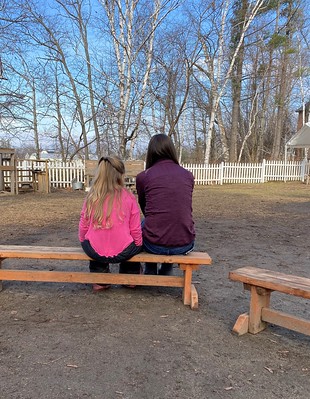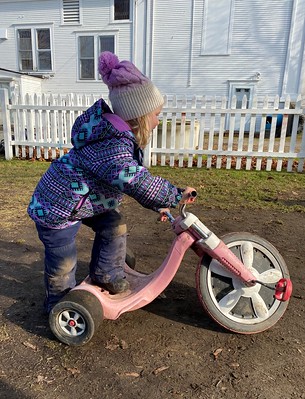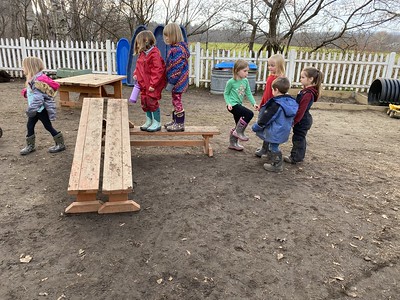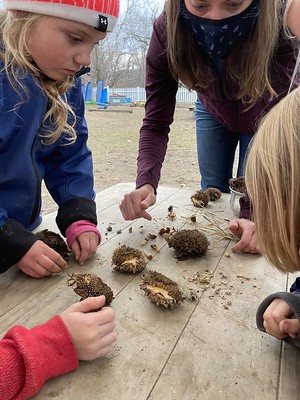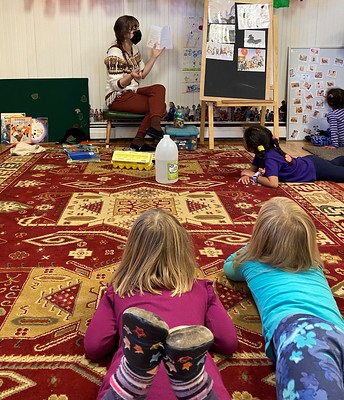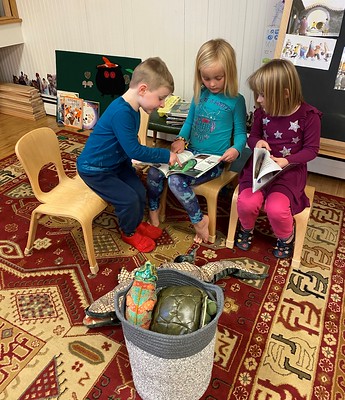Magnets made their way to the science area, so we did a little magnet work. We learned that metals containing nickel, steel, iron, and/or cobalt are magnetic (as are some rare earth alloys), while other metals are not. We used a magnet to test items and sort them by whether they are magnetic or not. We then used some magnets to do some painting. We placed one magnet on the top of our mat board and another below to move the top one through paint, creating streaks and lines and patterns.
Rose introduced reptile signs to correspond with our exploration of reptiles. We learned turtle, sea turtle, snake, lizard, alligator, and crocodile. When signing alligator and crocodile, one can tell the difference because we speak the corresponding word and can distinguish the formation of the sounds made by the mouth to identify which is being signed. Rose silently “spoke” the words alligator and crocodile and the children easily identified which she was saying. Rose retold the story Turkey Tumble, which she introduced last week, and this time the children helped out. They each chose to be a character in the story and sat with the corresponding stuffed animal/puppet while signing their lines from the story. Rose shared some alphabet pictures with the letter sign for the children to color, and worked with students to cut out and paste the hand signs for the alphabet to create an alphabet caterpillar, which they will assemble after break.
We introduced characteristics of a story, including character, setting, the conflict, the solution, and the feelings. We then compared and contrasted each of these in the stone soup stories we have read, observing that almost all of the versions were very similar aside from a bit of variety in the characters. We read the version of Stone Soup by Jon J. Muth, which is set in a village in ancient China and features three monks. While reading the story, the children took turns putting up pictures of the characters and happenings in the story, which we matched with a bead or set of beads to correspond with that particular aspect of the story. The children then made Stone Soup story telling bracelets. They chose 3 beads for the soldiers/monks/traveller(s), 3-5 beads for the villagers & children, a large wooden bead for the pot, 3 smooth round beads for the stones, 3 vegetable beads for the ingredients, and a heart bead at the end to represent the joy, love, and gratitude they all felt when they shared what little they had and joined together to spend time and eat their stone soup, a change of heart from the beginning of the story when everyone was guarded and suspicious from all the stress and struggles.
We celebrated a fourth birthday with the most recent birthday boy. He carried the earth around the sun while we listed the seasons and counted the years up to his fourth birthday, then sang happy birthday. He shared tasty chocolate cupcakes, which everyone thoroughly enjoyed!
Kindergarten students selected their own work, then spent some time creating and writing out their own recipes for what they would add to stone soup. They did some stone soup math, drawing pictures of the items they would put in their pot and totalling up all the ingredients. Many students have been reading rhyming word lists and sounding through phonetic consonant-vowel-consonant (CVC) words such as cat, Mac, rat, etc. to prepare for some early reader books. We have been learning that some consonants change the sounds of some vowels, such as m and n altering the /a/ sound, so using am and an as chunks. Some of the initial strategies we have been practicing are getting your mouth ready to say the first sound, then sliding through all the sounds, blending them together to make the word.
Friday students discussed a bit about reptiles and how their eggs are different from bird eggs. Reptile eggs have soft membranes on the outside, while bird eggs have hard shells. We put two eggs in a jar and added vinegar, which will dissolve the calcium shell, leaving only the soft membrane behind, so we can feel what a reptile egg is like. We also read a story about measurement. A king wanted to have a bed made for the queen, so he measured it with his feet. When the apprentice made the bed using his own feet, it was much too small, and finally they concluded that kings feet and apprentice feet were different sizes, so a standard unit of measurement should be agreed upon. We will use this information when we return to school to measure out the length of some reptiles.

